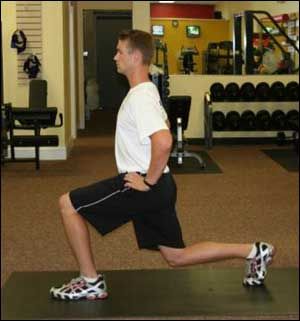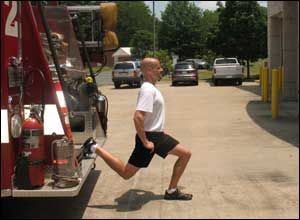With the new year well under way, and those often un-kept resolutions most likely already falling to the wayside, I will continue on the “straight and narrow” path from last year: functional fitness.
Functional fitness is the integration of strength, balance and flexibility into a single exercise. The benefit of any functionally based exercise is that you are using your body the way it was designed to move. Contorting yourself into a machine and being forced to move in a predetermined fashion has been proven to contribute to injury, yet the first thing we do when joining the gym or equipping the station with fitness equipment is utilize an exercise machine.
It becomes a predictable pattern; we perform the same exercises, and we continue to get injured, yet we expect different results. Sounds like insanity to me! So responders, let’s stop the insanity and embrace the fact that our jobs and technology are changing, and impacts how we exercise.
The exercise presented this month is the second phase of the previous month’s functional exercise, the squat reach. The lunge is a fantastic exercise that is both effective and safe, when done correctly. With that being said, if you have any history of knee issues, you must ensure that your hip/knee/ankle range of motion is sufficient to perform a lunge. If you have previously had a meniscus tear or knee reconstructive surgery, skip this exercise or consult a physical therapist professional.
It is important to build your core strength before moving on to more advanced techniques by doing all the stretches I have provided in my past columns. Be sure to also integrate a lot of self massage and self Myofascial Release techniques in order to reduce soreness and increase range of motion.*
The sheer beauty of the lunge is simple and numerous.
- Can easily be done while on duty
- Increases balance
- Increases both active and passive flexibility
- Builds strength and power
- Can be done in numerous fashions (holding weights, walking, static, foot up or down, stable or unstable surfaces, jumping, etc.)
Integrating fitness and wellness into your daily routine does not have to be complicated. As I have demonstrated with this exercise, simple yet effective daily techniques will not only keep you fit and flexible, but will aid in significantly reducing your chance of injury. Try this functional exercise two days a week and you will see and feel the difference in your body.
| The Lunge | Sets: 2 - 3 Reps: 8 - 15 Two to three times a week | |||
Preparation Movement Tips Progression
| ||||




